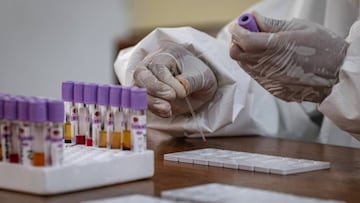Coronavirus: New, dominant strain could beat vaccines
According to a study carried out at a lab in the US, the mutation that has occurred in what has become the virus' dominant strain makes it particularly dangerous.

Fears that the coronavirus has mutated in a way that makes it even more dangerous appear not to have been unfounded.
Dominant strain could scupper vaccine efforts
A study at a laboratory in Los Alamos in the United States has found that a new, dominant strain of the virus, which began spreading through Europe in February and is different to that which first appeared in China, leaves sufferers more vulnerable to a second infection and could make the vaccines currently in development useless.
Published in bioRxiv, an open-access online repository for the biological sciences, the study is yet to be peer-reviewed, a process that is essential to its results being validated. It follows up on research carried out by a group of investigators at the Zhejlang University in China, who announced that the versions of the coronavirus that reached Europe and North America could be up to 270 times more dangerous than the virus that spread in Wuhan, where the pandemic began.
According to the findings in Los Alamos, this dominant strain could have the capacity to compromise the progress made so far in the fight against the virus, because the potential for repeat infection undermines the widespread immunity needed to limit the disease’s spread. What's more, the labs across the world that have been developing vaccines and drugs have been been using the virus' initial genetic sequencing, rather than that of this strain.
How has the virus mutated?
Related stories
The crucial mutation affects the spike protein, a mechanism that allows the virus to enter the host, multiplying its capacity for infection. This is the conclusion of a study that saw more than 6,000 sequences of the virus analysed, with 13 other mutations also looked at. None are as potent as this strain, which is thought to have replaced the original version of the virus in Italy at the end of February. “This is hard news,” said Bette Korber, one of the authors of the study, in a post on Facebook.
See also
- The stick-on throat patch that detects Covid-19 symptoms
- Where to claim unemployment benefits in the US: phone, online
Live coverage of the coronavirus crisis
You can stay up-to-date with the latest developments in the coronavirus pandemic by following our daily live blog.

